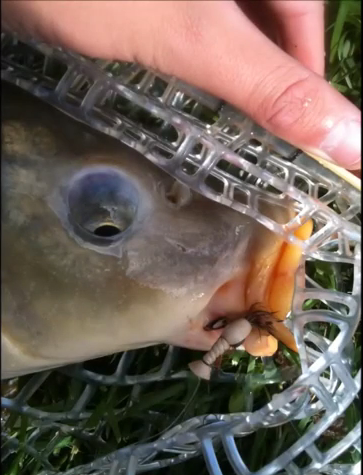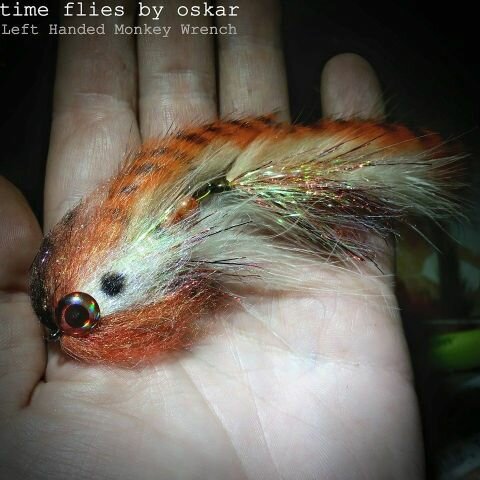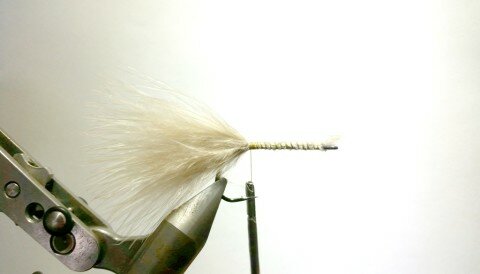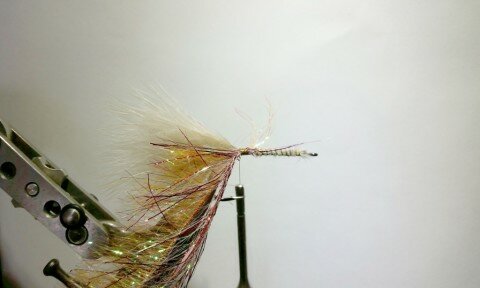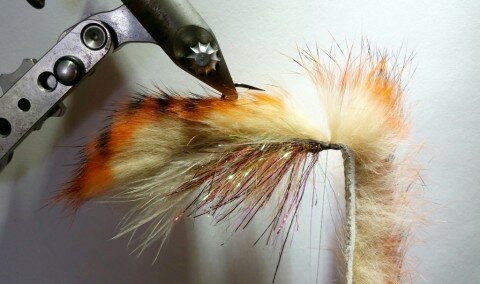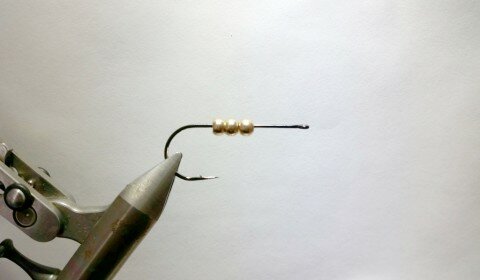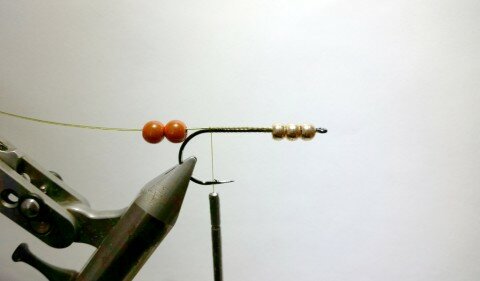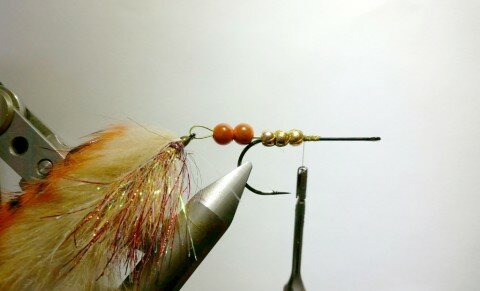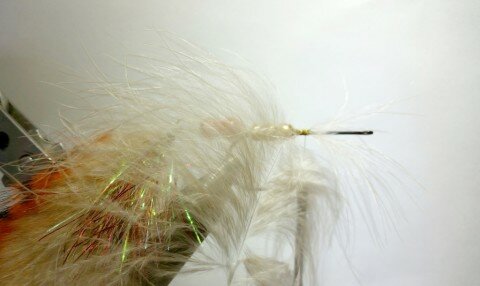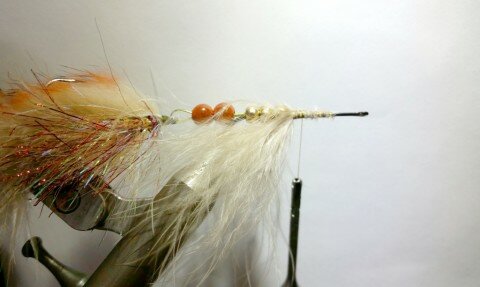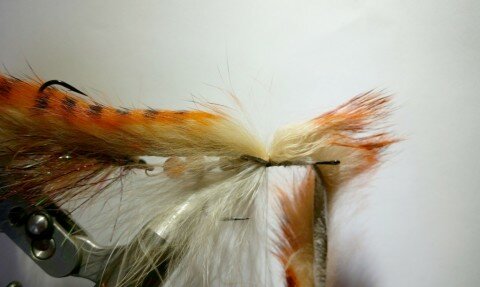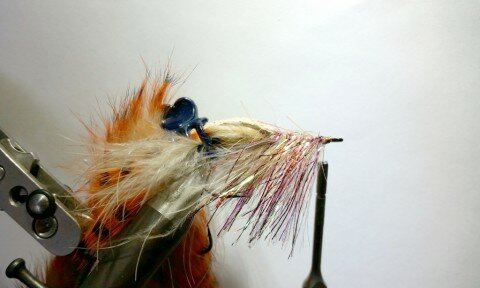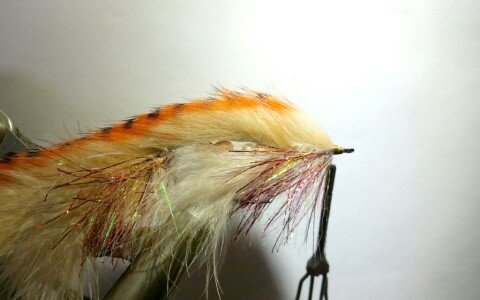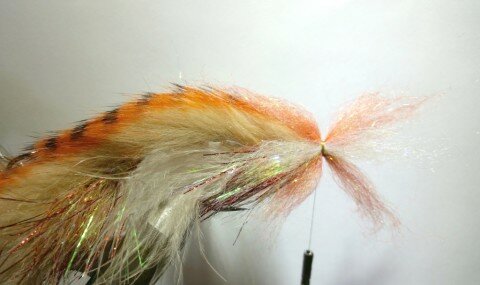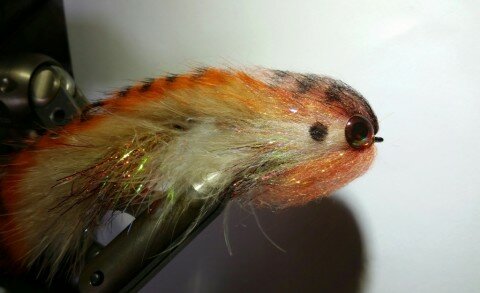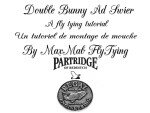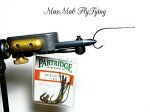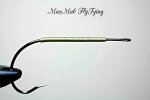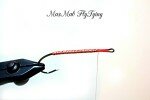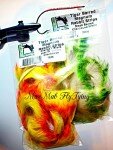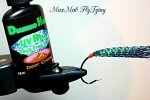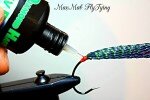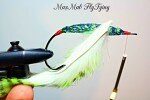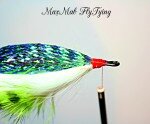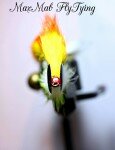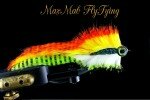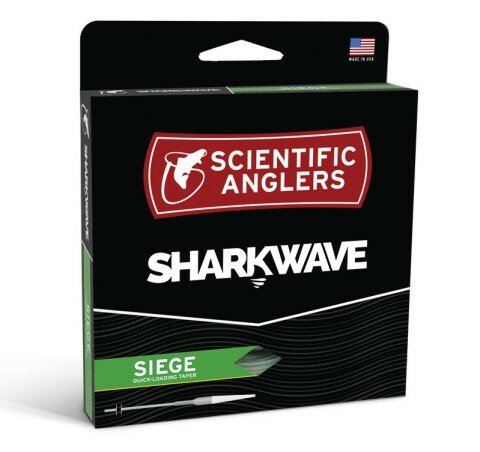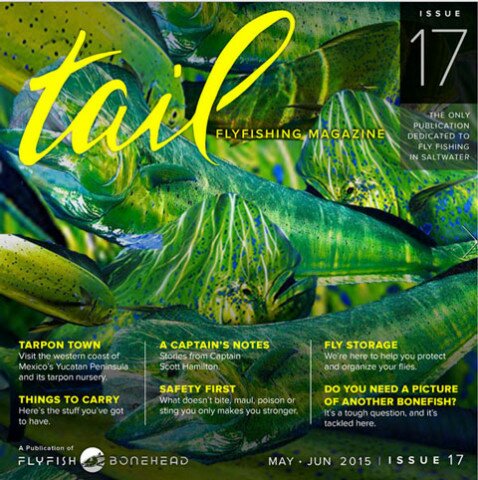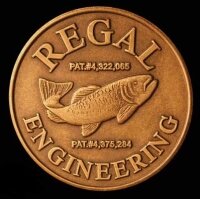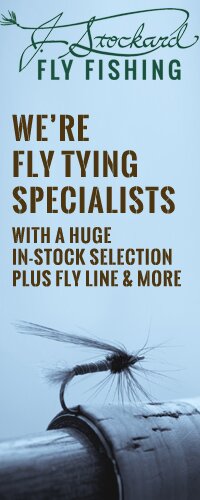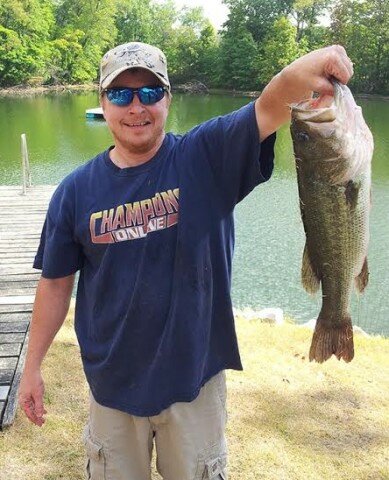
Paul J. Beel
Largemouth bass should be on the glorious minds of fly fishers everywhere, not just baitcaster wielding types. These fierce predators with beautiful big mouths are a blast to catch with a fly rod. In many places there are many more opportunities to catch largemouth than other species and that isn’t a bad thing. Unfortunately, when fly fishers mention bass, their thoughts automatically go to smallmouth bass. Don’t get me wrong, I fish for smallies just as much, but I feel some are missing out on a whole lot of fun not fishing for its largemouth cousin. I often wonder, why aren’t bucket mouths considered to be a primary target of fly fishers, especially when I feel a vicious take and enjoy a huge bend in my fly rod from one in my favorite local lake! For some positive influence I reached out to a few of my like minded largemouth junkies who will provide you with a little wisdom about these fish that we love to sling a fly line to. To begin, I’ll start with a few things I enjoy about largemouth on the fly.
This is a great fish to catch on a fly rod. What I like most is that I don’t have to worry about using smaller flies, I can tie up hefty 6.5 inch streamers and throw them out there on a 200 grain or larger fly line with my 7 weight and catch’em all day long. When they hit a fly, you usually know it. It isn’t a delicate little nibble, it is an all out smack down on your fly! They fight hard and after you catch one, I guarantee you will be hungry for more. Another thing you need to experience is tossing a popper or Zudbubbler out to one of these big mamas! Bloop, bloop, bloop….BAM! If that doesn’t get your blood pumping, I’m not sure what will.
I have heard some fly fishers say, “Those things will bite on anything!” Well, to answer that, I refer you to some of the information below. So now read on and pay attention to Pat Cohen, David Lewis, Jay Zimmerman, and Alvin Dedeaux and what they have to say about catching largemouth on the fly.
Paul J. Beel
FrankenFly
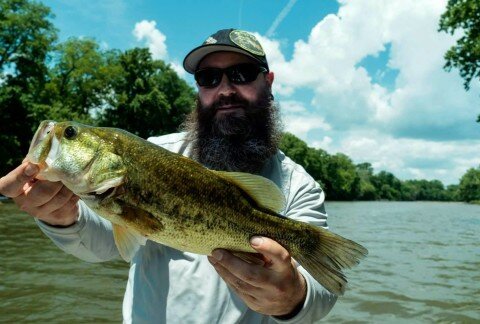
Pat Cohen
“Largmouth Bass… Most folks think of summer time, sunshine, lush green vegetation everywhere, lily pads on the water and top water bass fishing. Bass bugging is an amazing thing, and it’s why I fell in love with largemouth bass…but…it’s not always the most effective way of catching giant lunker buckets. Largemouth are actually a very complex fish that can be very tricky to catch. They are influenced by pressure fronts and other outside environmental pressures. Can you think of any other fish that a multi billion dollar industry is built around?…of course not…Pro Bass Anglers have dedicated their lives to learning and understanding these great fish, and yet they are often overlooked by fly anglers. They are an incredible game fish that offers challenge, great fights, splashing jumps, tail walks, have the potential to get huge and will put a scary bend in any 8wt.”
“This is not trout fishing, so leave your 3wt home and grab some big flies and a heavy stick. Be prepared to double haul and hang your flies up in trees and the pads. Largemouth relate to structure. Fallen trees, submerged timber, lily pads, points, rocks, docks and a number of other potential fly stealing obstacles. Prepare to do work. You may need to switch to a sink line and chuck an 8 inch streamer to suspended bass at 15 feet. You may be able to hit them on top. Learn to make weed guards. Good weed guards. Learn to strip set. This is not a fish that sips its food. They slam a fly throwing caution to the wind and are fully committed when they eat. Hold on. They are every bit as beautiful and sensitive as trout. But these fish fight like a warrior. The best part of bass on the fly is that the bugs can be big and gnarly and there is no ego amongst bass fly anglers. We all just want to catch fish and share pictures and stories.”
Pat Cohen
Super Fly
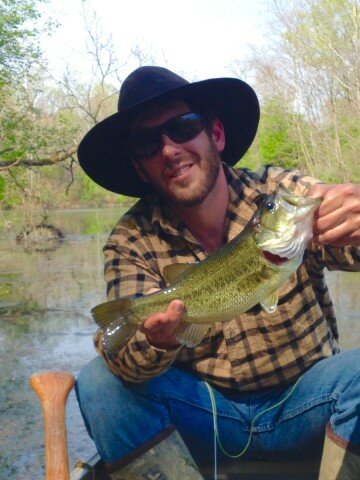
David Lewis
“I like to use an eight weight rod loaded with a sinking tip line, like Rio’s Outbound Short with the clear intermediate head. This time of year, when they are coming off the beds and many of them are still pouty, I’m throwing large flies and twitching them just enough to keep them animated. I’m not sure whether the clear tip hides the line from the fish or not, but the lakes and ponds where I fish are often extraordinarily clear, with visibility sometimes better than ten feet — and the really big ladies didn’t get that size being careless.”
“I think largemouth have a reputation for being too easy to catch, like girls that put out on the first date. They’ve been characterized as undiscerning and brutish by a lot of the guys you’ve seen on TV. That’s not really how I see them. I’ve seen bass, particularly males, exhibit really interesting behaviors — especially this time of year. Granted, they are voracious predators, but I think they are far more intelligent than they are given credit for.“
“I feel like I learn more from the fish I can’t catch than the ones I boat. I am endlessly fascinated by the switch in a bass’s brain – when it’s set to ‘off’, you couldn’t get him excited with a prime rib. When it’s set to ‘on’, hold on to your ass. It’s the vast spectrum in the middle, though, that separates a greenhorn from the dudes gripping lip.”
“Catching big largemouth is the same as catching big anything — trout, smallies, whitetail buck, whatever. If you are targeting trophy fish, they are going to tax your skills; they’re going to test you. The tactics are different. That goes for my by-catch, too; while the bream in my ponds have a larger median size than I see most places in this part of the country, to deliberately target the biggest individuals can be a workout. You’ve got to change things until you find something that works, and then you have to hope that it’s going to keep working, at least for a while. I find big bream give a lot of feedback on retrieve speed and pattern – there’s usually one speed that’s perfect, and everything else you do is dead wrong.”
“On bigger water or at times of day when bass are more sluggish, targeting big bream can be a good indicator of the habitat’s average bass size, too. If all I see are little tiny sunnies, I can usually assume there will only be a handful of worthwhile bass. However, if I run into a couple dinner plates, now I’m looking for swamps, now I’m looking for ambush structure, now I’m expecting to see the big girls.”
“It’s not the easiest material to come by in the proper size and shape for big bass, but I’ve been big on fishing oversize zonker snakes on long leaders (up to fifteen feet or so). Fished with a floating line, these weighted zonkers are essentially jigged over cover and the fish respond with enthusiasm. I lucked into some long strips of black bear, and the action is just gross; it’s a lethal combination.”
David S. Lewis is an outdoors writer and a fishing guide for Mad River Outfitters in Columbus, Ohio. He guides for largemouth bass in Southeastern Ohio, on hundreds of remote ponds and lakes. For information on booking David (or to connect with the best fly fishing outfitter in the Midwest) call Mad River Outfitters at , or e-mail at
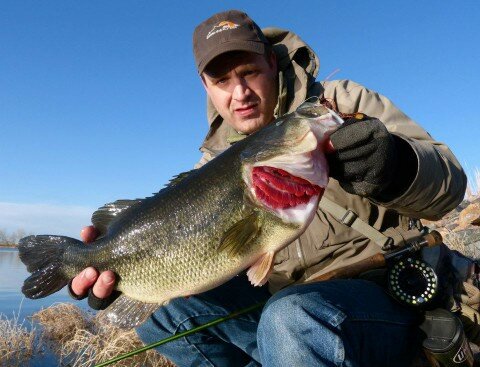
Jay Zimmerman
Do you feel that other fly fishers out there should try fly fishing for largemouth bass? If so, why?
“Yes. They willing eat flies and are prevalent across the lower 48. There is no reason not to fish for them.”
Some say that largemouth bass will bite on anything. Do you think that is true?
“That is true for bass, as well as trout and everything else we fish for… On the right day a tailwater trout will eat a bare hook and a largemouth bass will try to eat an errant tennis ball. They don’t do this regularly, however, and that is where the fun begins!”
What type of fly rod and line do you like to use when fly fishing for largemouths?
“Something stiff, usually in the six to eight range.”
What type of flies do you like using for largemouth?
“I guess I could categorize my bass flies into three groups; baitfish, crayfish and worms (not the San Juan kind).”
Jay Zimmerman
Charlie’s Fly Box
Jay’s Blog – Colorado Fly Fishing Reports
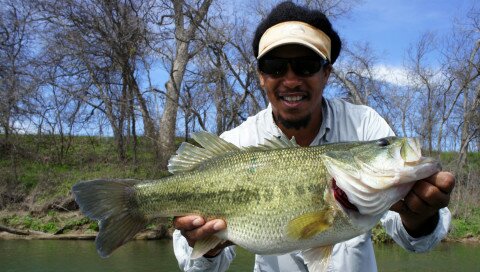
Alvin Dedeaux
Do you feel that other fly fishers out there should try fly fishing for largemouth bass? If so, why?
“Fly fishermen should fish for largemouth bass for a few different reasons.
1. They are everywhere. Lots more largemouth habitat than trout or smallmouth. More opportunities to catch fish.
2. Great practice for other types of fishing. Most largemouth flies are bigger and harder to throw and the presentation usually needs to be pretty accurate. I tell people all the time that if you can catch bass on the fly everything else will be easier.
3. Excitement. The strikes are so intense. I tell my trout fishing clients that a trout can sit and wait for the food to come to them and then sip it in. Everything a bass eats has to be chased down and killed. Much more predatory strikes.”
Some say that largemouth bass will bite on anything. Do you think that is true?
“Largemouth bass do eat a much more varied diet on a daily basis. They seem to be able to decide whether something is food and whether or not they have eaten one in the last few days.”
What type of fly rod and line do you like to use when fly fishing for largemouths?
“Most of the bass fishing we do is in the river so a floating line works most of the time. We use 6 and 7 weight rods most of the time.”
What type of flies do you like using for largemouth?
“Fly wise I have a few different faves. When the bass are looking up I would say popper fishing is the most fun. Right behind that would be deehair divers. When the water is cold we usually use weighted streamers . Weighted crawfish patterns can work any time of year.”
Alvin Dedeaux
All Water Guides
